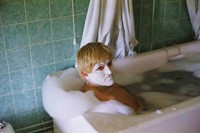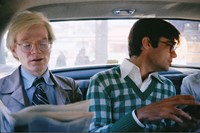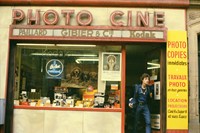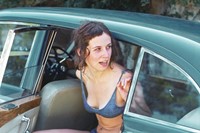Andy Warhol and David Hockney appear in Peter Schlesinger’s new exhibition, which brings together photos he took of artists and socialites in the 1970s
When Peter Schlesinger stepped into L’hôtel de Maisons last week for the opening of Design Miami Paris, his memory of visiting the hôtel particulier 45 years ago for Paloma Picasso’s wedding immediately flashed back. “I suddenly remembered all the guests climbing up the grand escalier and myself photographing them from the bottom of the staircase,” he tells AnOther. “It was quite strange returning to the same place.”
A photograph from that matrimonial bash currently hangs on the other side of the Seine, at the artist’s new solo exhibition Peter Schlesinger: France 1969-1979 at the freshly opened Mariposa Gallery in Le Marais. The show features 11 images that the New York-based artist took during his holidays in France between 1969 and 1979, a period that coincides with his time in London, where Schlesinger moved from the US west coast in 1966 as David Hockney’s lover and muse.
Surrounded by Europe’s bohemian elite, the then 18-year-old Schlesinger found himself immersed in a world of style and influence. The creative rush soon led him to reach for his camera; immortalising the fleeting moments of monumental figures, the resulting photographs embody an anarchic hedonism and breezy ease. Andy Warhol reads the daily paper in the backseat of a car in Monaco; Robert Mapplethorpe casually leaves a camera shop in Saint-Germain; David Hockney sits in a bubble-filled tub in Vichy; Ossie Clark lights a cigarette solo at a bistro; or Eric Boman and Grace Coddington take a stroll in Rue de Rivoli.
Below, Peter Schlesinger – whose oeuvre in photography has been subject to two volumes, A Checkered Past (2003) and Peter Schlesinger: A Photographic Memory 1968–1989 (2015) – shares his memories of the time period.

“Paris has changed, like many metropolises, since those days – the city is just so much more busy. We tried to see some shows and museums this week but you can’t just go in anywhere unless you book or stand in line. Before, you could just walk into Sainte-Chapelle or any museum. I was very nervous when I was here at age 18: everything was fresh and new. There wasn’t this much imagery running around, so everything felt more adventurous. Everything was a discovery in a way because there wasn’t really mass tourism, either. People weren’t taking photographs everywhere you go.
“In the moment, you just take things happening to you for granted. Paloma [Picasso], for example, was a close friend, but I didn’t know Karl [Lagerfeld] really. When I went there for the first time, he had an apartment on the hotel’s ground floor but when I went back for the wedding, he also had an apartment upstairs above the grand staircase. I had known Andy [Warhol] a little bit, and he wasn’t really a world-famous person at the time. Then, no one minded having their picture taken because they didn’t have to worry about those pictures being published anywhere.
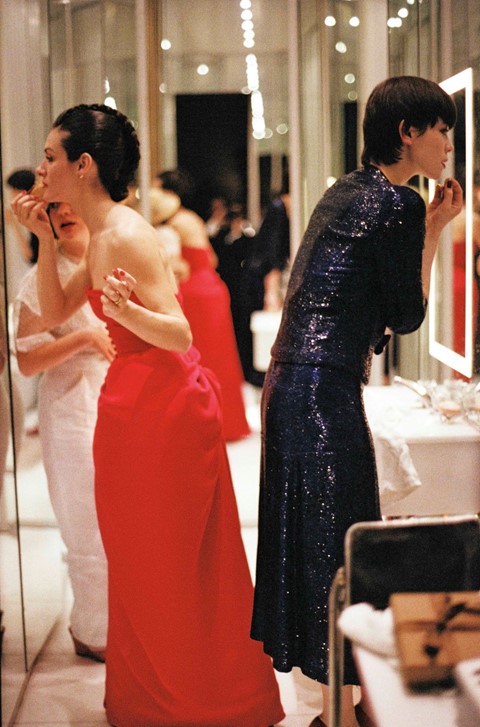
“My father liked photography. I did some photography classes in high school, and then my aunt who was in Japan brought me a camera back for my twentieth birthday. Some people say they see a parallel between my photography and ceramics which I don’t see as much. I can imagine they notice a similar sense of composition and attention to form. Also, some think they have a similar sense of humour. When I used to take pictures, I was thinking about the composition all the time. When you look through a hole with a camera, the lens forces you to frame a picture differently. This is not so much the case anymore with phone cameras.
“I didn’t have a lot of money then to buy films, and processing was quite expensive. I was quite economical with how many pictures I took and I got them printed at drug stores around the corner rather than a professional print shop. I had a roll with 36 pictures each time, so I had to be careful about what I photographed.
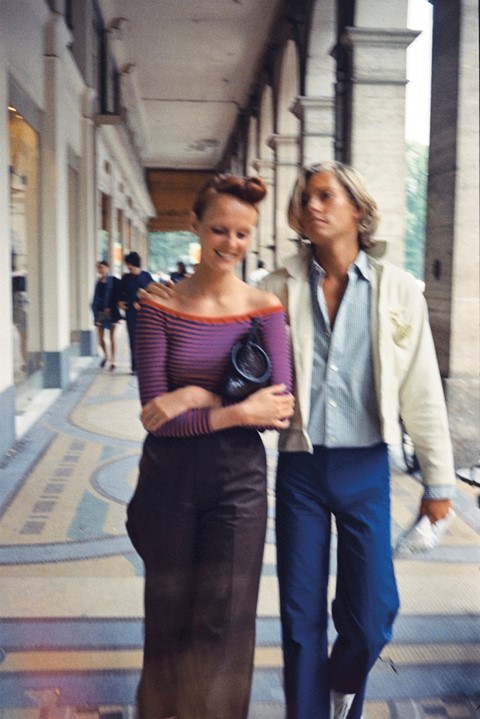
“[Robert] Mapplethorpe didn’t know me and he didn’t know I was taking his picture. With some [subjects], I was friends with them and found myself in the situations you see in the images. In most cases, you just grab a moment, whatever you can. The situations may just be very quick. If I could take one frame or two frames at most, that would be lucky. The Mapplethorpe image in the show, for example, was the only one I was able to take – there weren’t many to choose from. I however have a few different shots from La Piscine Deligny, and for the show, I chose the one I liked the best. I remember there was the main pool and an upper level where I took the picture from.“
Peter Schlesinger: France 1969 - 1979 is on show at Mariposa Gallery in Paris until 25 November 2023.

